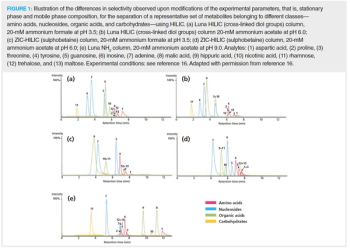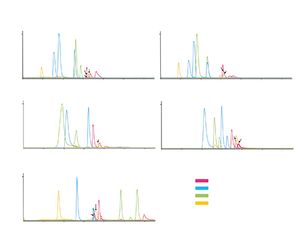
If we are going to achieve widespread adoption of multidimensional separations, we need more systematic approaches to method development that rely less on user experience.

If we are going to achieve widespread adoption of multidimensional separations, we need more systematic approaches to method development that rely less on user experience.

This article discusses innovation around the molecular structure of polymeric materials—an indispensable part of modern society—with a specific focus on sustainability. This field of research, so-called molecular correlative material characterization (MCMC), will enhance the transition into new sustainable functional copolymers.

Clinical metabolomics requires analytical methods that provide both high resolution and high throughput. In this review, we assess the promise of a variety of techniques-including HILIC, SFC, multidimensional LC, ion-mobility mass spectrometry, and data-independent acquisition mass spectrometry methods-to meet those needs.

This review article discusses the novel separation and detection strategies that are considered promising in clinical metabolomics to enhance the metabolome coverage. It includes hydrophilic interaction chromatography (HILIC), supercritical fluid chromatography (SFC), multidimensional LC approaches, as well as ion-mobility mass spectrometry (IM-MS) and data-independent acquisition (DIA) analysis methods.

Comprehensive two-dimensional liquid chromatography (LC×LC) is a powerful technique for separating highly complex samples. However, the proliferation of this technique is hindered by a range of challenges, including the possible impact of the additional separation on the detection sensitivity, concerns that mobile phase incompatibility problems will limit the applicability, and the complexity of the system and associated method development costs. This article addresses these issues and describes how modern modulators and software tools are overcoming the barriers associated with this technique.

Published: April 1st 2022 | Updated:

Published: May 1st 2018 | Updated:

Published: September 1st 2019 | Updated:

Published: December 1st 2019 | Updated:

Published: May 1st 2021 | Updated: